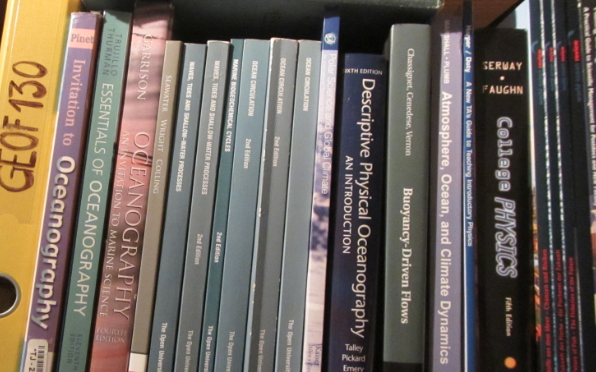On different approaches to peer-instruction and why one might want to use them.
Having sat in many different lectures by many different professors over the last year, and having given feedback on the methods used in most of those lectures, I find myself wondering how we can define a standard or even best practice for using clickers. Even when professors go through the classical Mazur steps, there are so many different ways they interpret those! Do we, for example, make sure that the first vote is really an individual vote, so that no interaction happened between students before they have to make this very first decision? I have not seen that implemented at my university. But does that matter? And why would one decide for or against it? I would guess that in most cases I have observed there was really no conscious decision being made – things just happen to happen a certain way.
A paper that I liked a lot and which describes a framework for describing and capturing instructional choices is “Not all interactive engagement is the same: Variations in physics professors’ implementation of Peer Instruction” by Turpen and Finkelstein (2009). I don’t want to talk about their framework as such, but there are a couple of questions they ask that I think are a helpful basis for reflection on our own teaching practices. For example there are questions clustering around the topic of listening to students and using the information from their answers. For example “what do I want students to learn, and what do I want to learn from the students?” might seem basic at first, but it is really not. What do I want students to learn? No matter what it is, what this question implies is “is the clicker question I am about to ask going to help them in that endeavor?”. The clicker question might be just testing knowledge, or it might make students think about a specific concept which they might get an even better grasp of by reflecting on your question.
And what do I want to learn from my students? The initial reaction of people I have talked with over the last year or so is puzzlement at this question. Why would I want to learn anything from my students? I am there to teach, they are there to learn. But is there really any point in asking questions if you are not trying to learn from them? Maybe not “learn” as in “learn new content”, but learn about their grasp of the topic, their learning process, where they are at right now. Do I use clicker questions as a way to test their knowledge, to inform my next steps during the class, to help them get a deeper understanding of the topic, to make them discuss? Those are all worthwhile goals, for sure, but they are different. And any one clicker question might or might not be able to help with all of those goals.
Another question is “do I need to listen to students’ ideas and reasoning and what are the benefits of listening to students’ ideas?”. Again, this is a question that I am guessing many people I have recently worked with would find strange. Why would I listen to student reasoning that doesn’t lead to the correct answer, or student reasoning that is different from how I want them to reason? Yes, I might learn something about where they go wrong, which might make it easier for me support them in getting it right. But isn’t it a really bad idea to expose the other students to something that is wrong? I would argue that no, it is not a bad idea. Students need to learn to distinguish between good reasoning and bad reasoning. And they can only do that if they see both good and bad reasoning, and learn to figure out why one is good and one is bad. I know many people are very reluctant of having students explain their reasoning that lead them to a wrong answer. It takes time and it doesn’t seem to lead towards the correct answer. But then what do we want? Answer-making or sense-making? Sense-making might involve taking a wrong turn occasionally, and realizing why it was a wrong turn before taking the right turn in the end. If the wrong answer isn’t elicited, it can’t be confronted or resolved.
I would really recommend you go read that paper. The authors are describing different instructional choices different instructors made, for example how they interact with students during the clicker questions. Did they leave the stage? Did they answer student questions? Did they discuss with students? (And yes, answering questions and discussing with students is not necessarily the same!). Even though there is not one single best practice to using clickers, it is definitely beneficial to reflect on different kinds of practice, or, at to at least become aware that there ARE different kinds of practice. Plenty to think about!
